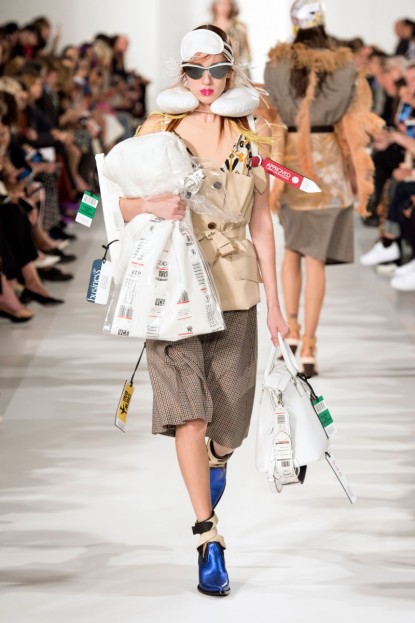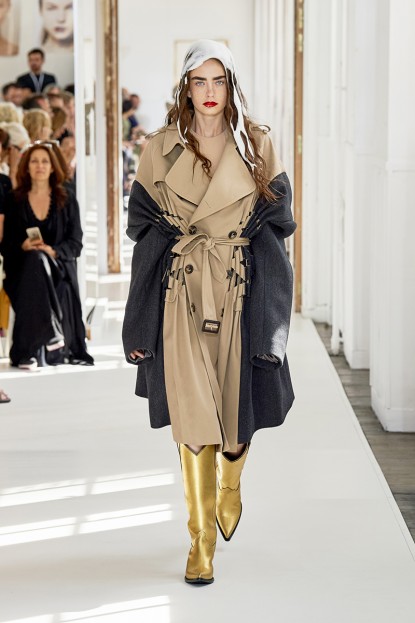Here's what happened when John Galliano returned to his old stomping ground
'John Galliano briefly boards the number 12 to Oxford Circus, and a passenger’s jaw literally drops. With his otherworldly air, the elusive Maison Maison Margiela designer is the last person you’d expect to see at an Elephant and Castle bus stop on a rainy afternoon. '
'On our way to the shoot, he’s been watching his formative years pass by from the car window. “I don’t remember any of these little things. It’s completely changed, hasn’t it?” The Heygate Street bus stop was young Galliano’s portal to the escapism of the West End as a teenager growing up in southeast London in the 1970s.'
'Galliano was six when his family relocated from sunny Gibraltar to southeast London, and the multicultural melting pot would forge the foundation for his sensory view of fashion. Since he started interpreting Maison Margiela’s trademark deconstruction in 2015, his collections have reflected a make-do-and-mend attitude close to his early fashion efforts. “To make yourself look original you customised things. That’s a very south London thing,” he explains.'
As a Central Saint Martins student in the early 1980s, he moved to Mornington Crescent, got into Bodymap and Boy George, hung out with Steve Strange and Rusty Egan, and went clubbing at Embassy and Taboo. “I graduated in 1984, the Thatcher years – your back up against the wall, no grants. You became really creative with the means you had. That was the period when all that deconstruction was actually happening for real in London, but we didn’t know."
'Perched on the bus-stop bench in his beret and furry Prada moccasins, he throws a Tesco plastic bag over his arm as if it were an evening purse. It’s the innate sense of appropriation that’s followed Galliano through four decades in fashion. Proposing a “new glamour”, his latest haute couture collection for Maison Margiela glamorised the unglamorous – an old men’s coat, a cardboard box. “Elephant and Castle is really glamorous,” he insists. “Underneath one of the subways was a Wimpy, with the ketchup in a plastic tomato. When you had pocket money you’d go for a Wimpy and chips.” Providing, of course, you hadn’t spent it on a night out in Soho.'
Read the full interview by Anders Christian Madsen HERE




